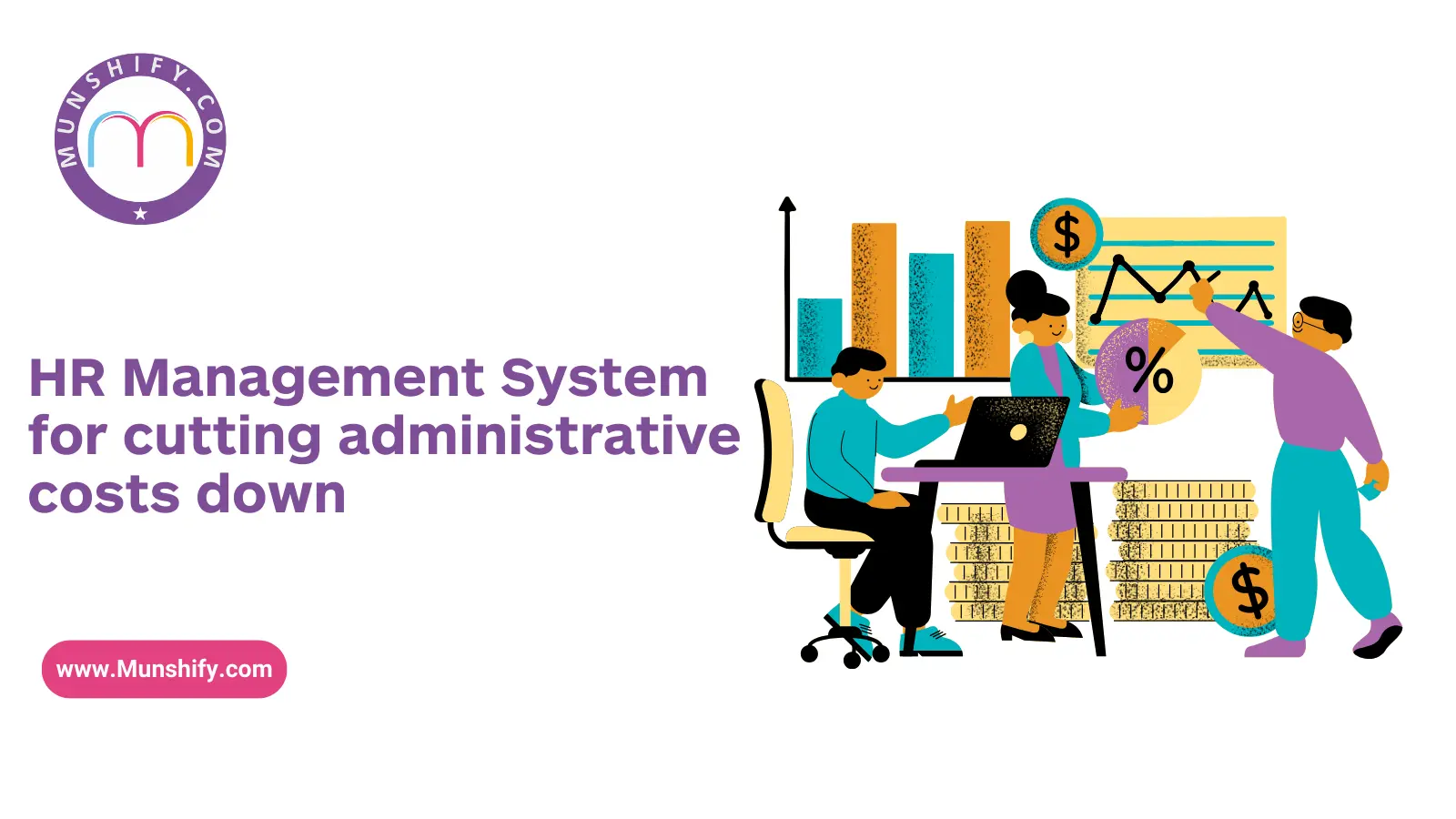In today’s rapidly evolving business landscape, efficiency and cost-effectiveness are paramount. One area where significant cost reductions can be achieved is in human resources (HR) management. By leveraging a modern HR Management System (HRMS), organizations can drastically cut administrative costs while enhancing overall productivity. This blog post will explore how an HR Management System can serve as a game-changer in reducing administrative expenses and streamlining HR operations.
Understanding the HR Management System
An HR Management System (HRMS) is a comprehensive software solution designed to automate and streamline various HR functions. From managing employee data to handling payroll and recruitment processes, an HRMS integrates multiple HR tasks into a single platform. This integration not only simplifies HR operations but also facilitates better data management and decision-making.
The Cost of Traditional HR Administration
Traditional HR administration often involves a plethora of manual tasks that can be both time-consuming and costly. These tasks include maintaining paper records, manually processing payroll, and handling employee queries individually. The administrative burden can quickly escalate, leading to increased overhead costs and reduced efficiency.
Moreover, traditional methods are prone to human error, which can result in costly mistakes, compliance issues, and dissatisfaction among employees. Thus, the need for a more efficient solution becomes evident.
How HR Management Systems Reduce Costs
1. Automation of Routine Tasks
One of the most significant advantages of an HR Management System is its ability to automate routine tasks. Administrative processes such as payroll calculations, leave management, and employee record keeping can be streamlined through automation. This not only reduces the need for manual intervention but also minimizes errors and ensures compliance with regulations.
By automating these tasks, organizations can save substantial amounts on administrative costs, as less time and resources are required for routine HR functions. Employees can focus on more strategic activities that drive business growth.
2. Streamlined Recruitment Processes
Recruitment is a critical function within HR, and it often involves extensive administrative work. From posting job openings to screening resumes and scheduling interviews, the recruitment process can be both time-consuming and expensive.
An HRMS simplifies and accelerates the recruitment process by automating job postings, tracking applicant data, and managing the entire hiring workflow. This streamlining not only speeds up the hiring process but also reduces costs associated with external recruitment agencies and job board fees.
3. Improved Employee Self-Service
Another cost-saving feature of an HR Management System is the improvement of employee self-service capabilities. Employees can access their own information, such as pay stubs, leave balances, and personal details, through a self-service portal. This reduces the need for HR staff to handle routine inquiries and administrative tasks, allowing them to focus on more strategic HR initiatives.
By empowering employees to manage their own information, organizations can achieve significant cost savings in terms of reduced HR workload and improved operational efficiency.
Implementing an HR Management System
Implementing an HR Management System requires careful planning and execution. Here are key steps to ensure a successful implementation:
1. Assess Your Needs: Determine the specific HR functions that need automation and identify the features required in an HRMS.
2. Choose the Right HRMS: Select a system that aligns with your organization’s size, industry, and specific needs.
3. Plan the Implementation: Develop a detailed implementation plan, including timelines, resource allocation, and training requirements.
4. Train Your Team: Ensure that HR staff and employees are adequately trained to use the new system effectively.
5. Monitor and Optimize: Continuously monitor the system’s performance and make adjustments as needed to maximize its benefits.
The implementation of an HR Management System represents a significant opportunity for organizations to reduce administrative costs while enhancing overall efficiency. By automating routine tasks, streamlining recruitment processes, and improving employee self-service, HRMS solutions offer substantial cost savings and operational improvements.
As businesses continue to seek ways to optimize their operations and reduce expenses, adopting an HR Management System stands out as a strategic move toward achieving these goals. Embracing this technology not only leads to financial savings but also positions organizations for greater success in a competitive business environment.
Frequently Asked Questions (FAQ)
1. What is an HR Management System (HRMS)?
An HR Management System (HRMS) is a software platform that integrates and automates various HR functions, including payroll, recruitment, leave management, and employee data management. It helps streamline HR processes, reduce manual workload, and improve overall efficiency.
2. How does an HRMS help in reducing administrative costs?
An HRMS reduces administrative costs by automating routine HR tasks, minimizing the need for manual intervention, and reducing errors. It streamlines recruitment, enhances employee self-service, and provides better data management, all of which contribute to cost savings.
3. Is an HRMS suitable for small businesses?
Yes, an HRMS can be highly beneficial for small businesses. It helps them manage HR functions more efficiently with limited resources, reduces paperwork, and saves time on administrative tasks, allowing them to focus on strategic growth.
4. What features should I look for in an HRMS?
Key features to look for in an HRMS include payroll management, employee self-service, time and attendance tracking, recruitment automation, performance management, and compliance management. Choosing a system that meets your organization’s specific needs is essential.
5. How long does it take to implement an HRMS?
The implementation timeline for an HRMS varies depending on the complexity of the system and the organization’s specific requirements. Generally, it can take anywhere from a few weeks to several months. Proper planning, training, and support are crucial to a successful implementation.
Ready to cut down on administrative costs and boost efficiency? Implement an Munshify HR Management System today and transform your HR operations!


